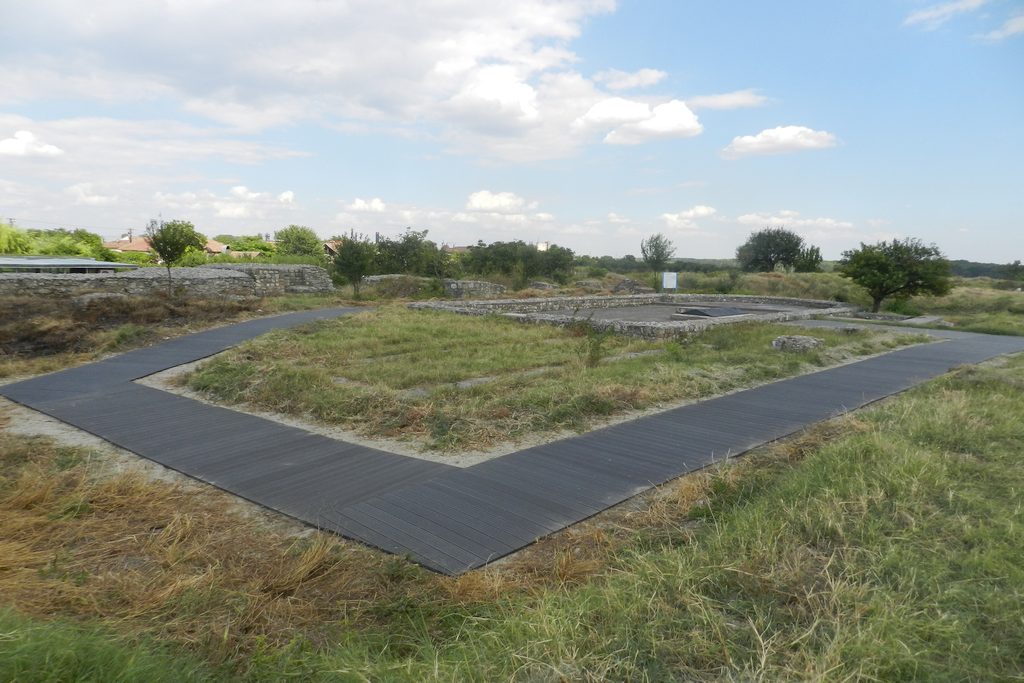

The Sucidava Citadel was an important military and economic center of a Geto- Dacian respectevely the “suci”, hence the name of the citadel. After the conquest of Dacia by the Romans here was built a fort that became important from the economic point of view and thereby contributing to the development of the Roman city Sucidava. Emperor Constantine the Great will build here, in the fourth century, from timber and stone, a bridge over the Danube, bridge considered, at the time, one of the longest in ancient times by its almost 2.5 km. Currently, from that bridge it has remained only a “foot”.
Sucidava Citadel covers an area of about 22 hectares. After being destroyed by the Huns, it will be rebuilt by the Byzantine emperor Justinian between 527 and 535. Archaeological research attests after year 602 a Daco-Roman polulation and then Romanian – mentioned into “The Diploma of Knights of St. John” in 1247, when the village Celei is attested. In 1977 it was brought back to the surface The Constantinian Gate, which comes from the fourth century and is in the S-V side of the city, linking the Bridge raised by Constantine the Great and the inside of the fort. Even today one can still see onsite traces of Roman carriges that crosseed the Danube using the bridge, they crossed over the valley of the citadel using a wooden bridge and then entrering into the city. Inside the fortress can be seen the remains of Christian Basilica, with 65 cm thick walls, built of nonpacked stone tided with mortar , which originally had a height of 1.08 meters. Inside the basilica, under the floor, were found six graves, oriented V-E. Another aspect worth mentioning is the hypocaust” the thermic chamber (dating back to IV-V centuries AD)of which now is left only foundation of the room of 11 meters in length and its underfloor heating system, from which one can admire the remains of 22 poles perfectly aligned. In the space between the floor and the base pillars (pilae) circulates hot air coming from a captor outside the building – in this way is realised the heating of this important construction, which is believed to be the headquarters of city comandment.
A main attraction is “The Hidden Fountain”, considered unique by way of construction. Arranged in the sixth century, it is (re-) discovered only in 1958 and the name comes from the fact that it allowed the supply of water from a subterranean spring outside the city walls – to 14 meters, being built, believe the historians, at the same time with the restoration of the fortress during the reigh of Emperor Justinian, and was used throughout its existence. It is built of red brick, original, which is kept today in the restored vault, the sides are also original. It has been fitted with ventilation holes still functional today as it was a closed environment where it reaches the maximum depth: the tunnel descends in an inclined plane, 26 meters – to a depth of 18 meters. Currently remained a habit that in their wedding day, the bride and groom must come here to drink the “living water” from this spring for a full of love marriage. For this reason, Hidden Fountain is called by locals and “fountain of love”. The water is still drinkable and has a clarity so great that we must murky it to figure out that it exists.
